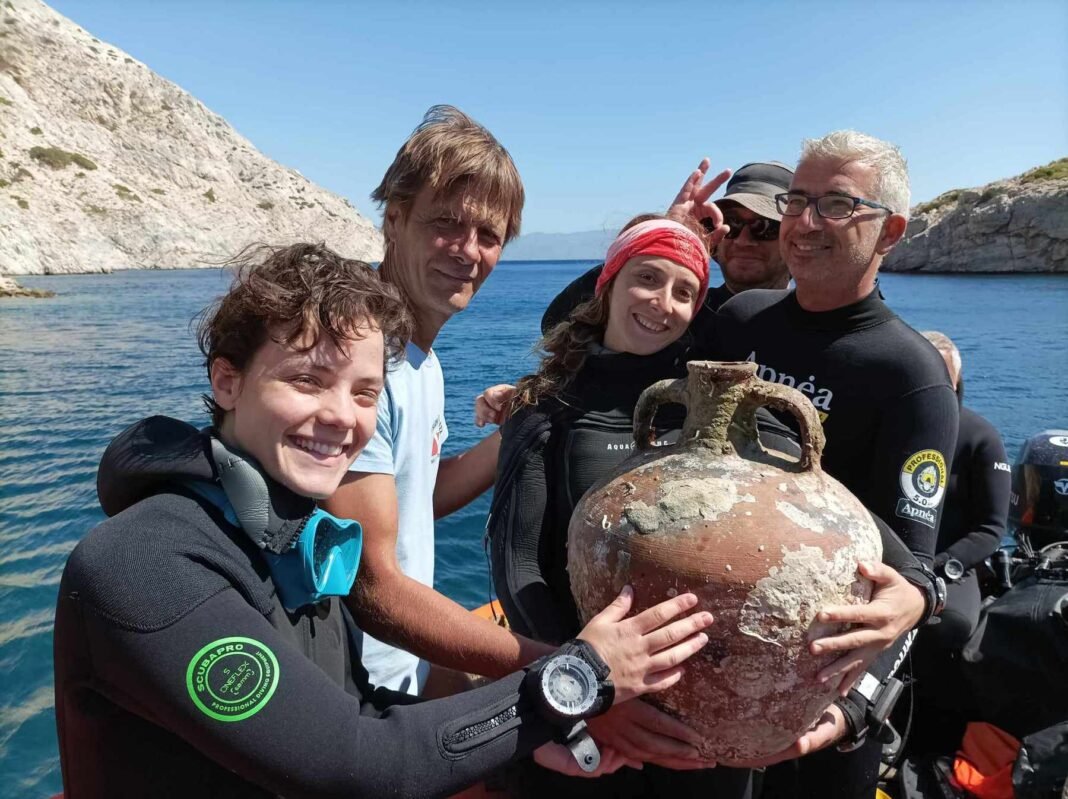
New archaeological findings are challenging long-held beliefs about the origins of large-scale trade in the ancient Aegean, suggesting that the Northern Aegean region was a major commercial power centuries earlier than previously thought.
The crucial and previously unrecognized role of numerous commercial amphora workshops in Northern Greece was highlighted at the international conference, “Amphoras and the Archaeology of Ancient Economies: Regional Production – Regional Circulation: Amphoras and Aegean Communities,” organized by the Ephorate of Antiquities of Chalkidiki and Mount Athos.
Shifting the commercial hub to the Northern Aegean
Archaeologist Konstantinos Filis, head of the Department of Prehistoric and Classical Antiquities for the Ephorate, told the Athens-Macedonian News Agency (AMNA):
“Until recently, we believed that Attica (Athens) and Corinth were the first city-states to produce commercial amphorae for distributing oil and possibly other consumer goods, primarily to the Western Mediterranean. However, it now appears that the Northern Aegean became commercially active much earlier.”
This prominence continued for centuries. Mark Lawall, a Professor of Archaeology at the University of Manitoba, Canada, and a conference committee member, praised the significance of the workshops, particularly those in the region of Ancient Mende, on the western coast of the Pallene peninsula in Halkidiki.
“The dominant production center in the 5th and 4th centuries BC was located here,” Lawall stated, noting that “most amphorae in the Athenian Agora during the 5th century originated from Northern Greece.”
Mende’s strategic location on the southern tip of the Kassandra Peninsula allowed it to communicate with Greek cities in both Southern Greece and the Northern Aegean, as well as with distant colonies on the Black Sea.
The “containers of the era”
Filis referred to commercial amphorae as “the containers of the era,” noting that their study reveals essential social, cultural, and economic information.
He explained that the region had a “well-organized economy with a significant surplus of agricultural products,” which was disposed of in markets outside the area. This system of “early exports” began as early as the late 8th century BC:
The earliest type of commercial amphorae, known as “Thermaic” or Geometric amphorae, originated from the Thermaic Gulf area and possibly production centers in Chalkidiki.
These containers have been found across the Northern Aegean and as far west as Pithekoussai (Naples), making them the earliest commercial amphora types in the entire Aegean space.
Recent excavations by the Ephorate of Antiquities of Chalkidiki have uncovered numerous workshop remains and massive storage pits filled with commercial amphorae in various areas of Chalkidiki, particularly on the Kassandra peninsula and in the region of modern Ierissos (ancient Akanthos).
The standardized packaging of antiquity
Filis elaborated that “commercial amphorae” were vessels with standardized, functional characteristics. Just as a modern person recognizes a wine bottle without a label, so too did ancient merchants and consumers.
“Each region produced its own specific shape. This was obviously a kind of advertisement for the producers, while traders and consumers were able to recognize the origin and contents of the amphora,” he said.
In the wider Thessaloniki area, Filis identifies the central ancient port as Karabournaki, which is linked to ancient Therme. This settlement, under excavation for the last 30 years, likely served as the commercial hub for inland settlements like Toumba, Stavroupoli, and Polichni. Significant quantities of commercial amphorae have been found there, which were then distributed inland via land networks.


